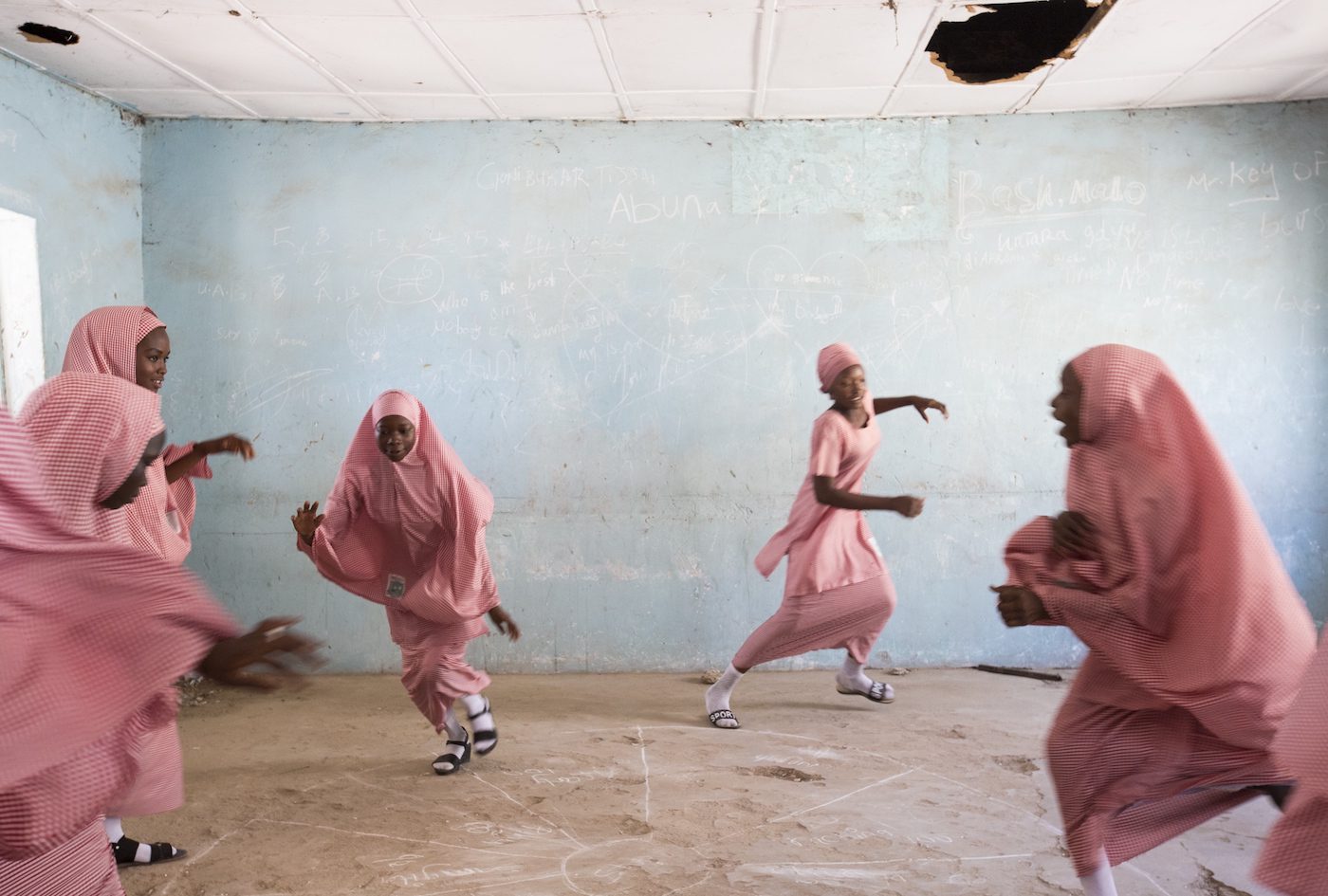Mobility in the arts, geographical or otherwise, is often seen as almost a requirement. However, COVID-19 has put to the test this very idea and aspiration. In the series "States of Mobility" we have selected texts that probe assumptions of movement in relation to people on the African continent and beyond. Here our author Obidike Okafor talks to Iheanyi Onwuegbucha about the importance of mobility in daily life and art and the term “diaspora” no one uses to describe African migrant groups who live in a foreign land within the continent, though it is a place where movement is a way of life. He co-curated Diaspora at Home, a project by the Center for Contemporary Art (CCA) in Lagos and KADIST Paris, that engages the public in discussions on mobility and consists of an exhibition in Lagos and one in Paris.

Rahima Gambo, from the series "Education is forbbiden", 2015-2016. Gambo participates in the "Diaspora At Home" exhibiiton in Lagos and Paris 2019-2020.
Contemporary And: Who came up with the idea for the project?
Iheanyi Onwuegbucha: It was KADIST that approached CCA in Lagos for a collaboration, and this was facilitated by Philippe Pirotte, a KADIST advisor. The collaboration is part of a broader effort by KADIST to form new partnerships around the world and engage with its collection. At its inception in 2018, Bisi Silva recommended that I should lead the project on behalf of CCA. I had several Skype meetings with Sophie Potelon, who was assigned to lead the project on KADIST’s side. Many ideas were discussed and one thing that struck us was the issues associated with shipping artworks within the African continent and problems of intracontinental travel in Africa. This led to discussing current debates on Africans’ mobility, and we decided to focus on that.
C&: How did you decide on a title?
IO: “African Diaspora” has always been used to refer to individuals with origins in Africa who live outside the continent. But there are a lot of Africans who live on the continent but outside their places of origin. How do you refer to the people who undoubtedly live in diaspora but in their home continent? They are Africans in diaspora but in Africa. For instance, in South Africa we have the Nigerian diaspora. And in Nigeria there is the Igbo diaspora in Lagos. While discussing this issue with my colleague Sophie, the title « Diaspora at Home » emerged.

Abraham Oghobase, Untitled 3. Oghobase participates in the « Diaspora At Home » exhibiiton in Lagos and Paris 2019-2020.
C&: Why do you feel that talking about mobility in Africa through art is important at this time?
IO: There is currently a huge global debate on the mass migration of Africans to Europe and the US, and on the “refugee crisis” in Europe. Yet little attention is paid to the age-old mobility of Africans within Africa, and its economic and socio-cultural implications. It is therefore timely to bring the attention of the world to the fact that while a few Africans are migrating to Europe, the US, and Canada, a whole lot more Africans migrate within the continent for economic, social, and political reasons. In addition, there are immigrants in Africa from Asia, the Middle East, and other parts of the world. These conversations need to be had alongside those about Trump’s wall and the crisis in the Mediterranean Sea.
C&: Can you talk us through the program for the project?
IO: The project began with my residency at KADIST in January 2019, followed by the residency of French-Syrian artist Bady Dalloul currently ongoing in Lagos. Subsequent residencies are also planned. The idea is to encourage the movement of the artists rather than the shipping of the artworks. Being in residence in Lagos gives artists an opportunity to experience the context in which their works will be shown and a first-hand experience of travel within Africa.
The resulting exhibition will open on 3 November 2019 at CCA, Lagos and will be followed by a program of talks and film screenings in partnership with the Alliance Française of Lagos. In 2020, the exhibition will travel to Paris to be shown at KADIST as part of the programs for the French-government-supported Africa 2020.
C&: What were the criteria for selecting the artists involved in Diaspora at Home?
IO: The primary idea for the collaboration with KADIST was to take the opportunity to work with an institutional collection. Therefore, during my residency in Paris, Sophie and I researched the KADIST collection for artists whose works are related to mobility and we did studio visits with the artists. Also, we invited Nigerian artists who are not part of the collection to join the project so as to give opportunity for a balanced perspective.
C&: What do you hope audiences will gain from the discussions and exhibition around Diaspora at Home?
IO: Among many things, we hope the project will generate further discussions on the experiences of Africans who live in Africa away from their place of origin. Also we hope to equally bring to the fore the challenges faced by travelers and immigrants in Africa, even as we discuss the global issues of migration.
The first exhibition and events series of Diaspora at Home ran from 4 November 2019 to 31 January 2020 at CCA Lagos, Nigeria. The project shows in Paris, France between October and December 2020.
Iheanyi Onwuegbucha is Curator at the Centre for Contemporary Arts, Lagos (CCA, Lagos). He is a 2016 Chevening Scholar with an MA in Art Gallery and Museum Studies from the University of Leeds. His current exhibition projects include: “LineGuage: Textual Imagery | Linear Allegories” CCA, Lagos; “A Collection of Stories”, CCA, Lagos and Kadist Foundation, Paris; and “Layers”, Labanque Art Centre, Bethune.
Based in Lagos, Obidike Okafor is a content consultant, freelance art journalist, and documentary filmmaker.
More Editorial